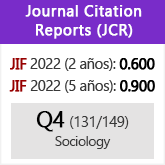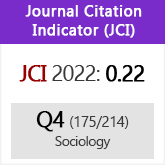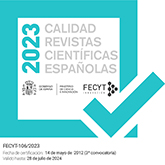Descuento temporal y anticipación del dolor. Evidencia experimental
DOI:
https://doi.org/10.3989/ris.2011.04.1APalabras clave:
Descuento temporal, Dolor anticipado, experimentos económicos, impacienciaResumen
Este artículo trata de la anticipación del dolor experimentada antes de los procedimientos médicos. nuestros resultados experimentales muestran que los individuos con factor de descuento temporal más bajo son más proclives a sufrir dolor por adelantado. el artículo proporciona un marco en el que racionalizar la relación existente entre impaciencia y anticipación del dolor. en este marco, los sujetos más impacientes, que evalúan sólo los eventos muy próximos en el tiempo, focalizan su atención principalmente en los efectos negativos de los procedimientos médicos (sólo los costes), mientras que los individuos más pacientes tienen una valoración neta positiva de los actos médicos puesto que valoran tanto el coste en el que se incurre en el presente como los beneficios que se obtendrán en el futuro.
Descargas
Citas
Brandts, J. and E. Fatás. 2011. “social preferences.” Revista Internacional de Sociología this issue.
Brañas-Garza, P., Espinosa, M.P. and Repollés, M. 2010. “Discounting future pain: effect on selfreported pain.” Neuroscience & Medicine 1(1):14-19.
Budría, s., Lacomba, J.A., lagos, F. and swedberg, p. 2011. “When obese people are more patient than non-obese people: a study of post-surgery individuals in a weight loss association.” Revista Internacional de Sociología, this issue. PMid:12805527
Camerer, C. 2003. “Strategizing in the Brain.” Science 300:1673-1675. http://dx.doi.org/10.1126/science.1086215
Colloca l. and Benedetti, F. 2007. “nocebo hyperalgesia: how anxiety is turned into pain.” Current Opinion in Anesthesiology 20:435-439.
Coricelli, G. and Nagel, R.M. 2011. “The neural basis of bounded rational behavior.” Revista Internacional de Sociología this issue.
Cutler, D. and Glaeser, E. 2005. “What explains differences in smoking, drinking and other healthrelated behaviors?” American Economic Review 95: 238-242. http://dx.doi.org/10.1257/000282805774670464 PMid:11796988
Enck, P., Benedetti, F. and Schedlowski, m. 2008. “new insights into the placebo and nocebo responses.”Neuron 59: 195-206.
Fehr, E. 2002. “Behavioral science: the economics of impatience.” Nature 415: 269-272. http://dx.doi.org/10.1038/415269a
García-Gallego, A., Georgantzís, N., Jaramillo-Gutiérrez A. and M. Parravano. 2011. “The lottery-panel task for bi-dimensional parameter-free elicitation of risk attitudes.” Revista Internacional de Sociología this issue. PMid:19348540
Golub, S.A., Gilbert, D.T. and Wilson, T.D. 2009. “Anticipating one’s troubles: The costs and benefits of negative expectations.” Emotion 9: 277-281. http://dx.doi.org/10.1037/a0014716 PMid:17182771
Hariri, A.R., Brown, S.M., Williamson D.E., Flory, J.D, De Wit, H. and Manuk, S.B. 2006. “Preference for immediate over delayed rewards is associated with magnitude of ventral striatal activity.” Journal of Neuroscience 26:13213-13217. http://dx.doi.org/10.1523/JNEUROSCI.3446-06.2006
Kim K. and Zauberman, G. 2009. “Perception of Anticipatory Time in Temporal Discounting.” Journal of Neuroscience, Psychology, and Economics 2:91-101. http://dx.doi.org/10.1037/a0017686
Knutson, B., and Peterson, R. 2005. “Neurally Reconstructing Expected Utility.” Games and Economic Behavior 52:305-315. http://dx.doi.org/10.1016/j.geb.2005.01.002 PMid:16129404
Kuhnen, C., and Knutson, B. 2005. “The Neural Basis of Financial Risk Taking.” Neuron 47:763-770. http://dx.doi.org/10.1016/j.neuron.2005.08.008 PMid:17522323
laibson, D. 1997. “Golden eggs and hyperbolic discounting.” Quarterly Journal of Economics 42:861-871.
McClure, S.M, Ericson, K., Laibson, D., Loewenstein, G. and Cohen, J. 2007. “Time Discounting for primary rewards.” Journal of Neuroscience 27:5796-5804. http://dx.doi.org/10.1523/JNEUROSCI.4246-06.2007 PMid:15486304
Mcclure, S.M, Laibson, D., Loewenstein, G. and Cohen, J. 2004. “Separate neural systems value immediate and delayed monetary rewards.” Science, 306: 503-507. http://dx.doi.org/10.1126/science.1100907
Smith, K., Dickhaut, J., McCabe, K., and Pardo, J.V. 2002. “Neuronal Substrates for Choice under ambiguity, risk, Gains, and losses.” Management Science 48: 711-718. http://dx.doi.org/10.1287/mnsc.48.6.711.194
Viscusi, W.K., Huber, J. and Bell, J. 2008. “Estimating discount rates for environmental quality from utility-based choice experiments.” Journal of Risk and Uncertainty 37:199-220. http://dx.doi.org/10.1007/s11166-008-9045-x
Wittmann, M. and Paulus, M.P. 2009. “intertemporal choice: neuronal and psychological Determinants of economic Decisions.” Journal of Neuroscience, Psychology, and Economics 2:71-74. http://dx.doi.org/10.1037/a0017695
Descargas
Publicado
Cómo citar
Número
Sección
Licencia
Derechos de autor 2012 Consejo Superior de Investigaciones Científicas (CSIC)

Esta obra está bajo una licencia internacional Creative Commons Atribución 4.0.
© CSIC. Los originales publicados en las ediciones impresa y electrónica de esta Revista son propiedad del Consejo Superior de Investigaciones Científicas, siendo necesario citar la procedencia en cualquier reproducción parcial o total.Salvo indicación contraria, todos los contenidos de la edición electrónica se distribuyen bajo una licencia de uso y distribución “Creative Commons Reconocimiento 4.0 Internacional ” (CC BY 4.0). Puede consultar desde aquí la versión informativa y el texto legal de la licencia. Esta circunstancia ha de hacerse constar expresamente de esta forma cuando sea necesario.
No se autoriza el depósito en repositorios, páginas web personales o similares de cualquier otra versión distinta a la publicada por el editor.

















